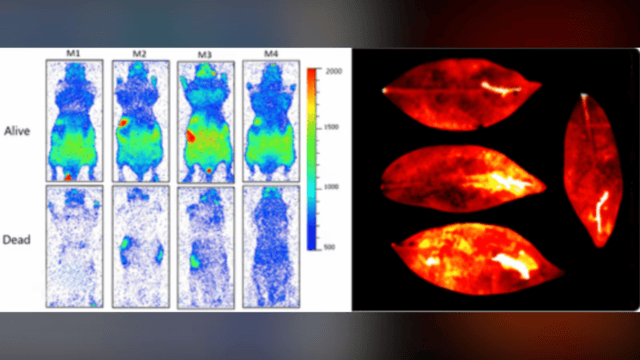
Images taken by researchers V. Salari, V. Seshan, L. Frankle, D. England, C. Simon, and D. Oblak have been featured in a recent issue of The Journal of Physical Chemistry Letters. CTV
A new study has revealed something unusual: living things give off a very weak light, and that light fades when they die. Canadian scientists recorded this glow in mice and plant leaves. The light, although invisible to our eyes, is real and part of how life works.
This glow is called ultraweak photon emission (UPE). It happens because of tiny chemical reactions inside living cells. These reactions are part of how our bodies use oxygen and make energy. While we can't see this glow, special cameras can.
One of the researchers explained, “We metabolize; we give off light. That does not imply anything else than we’re producing energy.”
What Causes This Glow?
UPE comes from natural processes in our cells. When our bodies use oxygen, they create special molecules. Some of these molecules give off tiny bursts of light called photons.
It’s not magic or some mysterious energy. Think of it like a glow stick. When two chemicals mix, they release energy as light. In the same way, our cells give off faint light.
This light is extremely weak—only about 10 to 1,000 photons per square centimetre each second. That’s nothing compared to a light bulb, which gives off billions of billions of photons. You need complete darkness and a super-sensitive camera to see it.
What Did Scientists Discover?
The scientists studied both living and recently dead mice. They took images 30 minutes after death. They saw that the light quickly faded. Some spots stayed bright for a short time, mostly near the liver.
The researchers also tested plant leaves. They injured the leaves and applied different substances. When they used benzocaine, a painkiller, the light got brighter. It even caused a stronger glow than hydrogen peroxide. They don’t yet know exactly why.
It’s Not Body Heat
Many people might wonder if this glow is just body heat. But the scientists say no. They controlled the temperature of the mice during the tests. The glow they captured was not from heat.
Body heat gives off infrared light, which is different from the light in this study. One scientist said it’s like comparing loud music to a quiet whisper. The glow from UPE is much more subtle.
What’s Next for This Research?
The team hopes to explore more species. For example, do fish or lizards show the same kind of light? Earlier research found UPE in living humans, especially near the hands, chest, or head. But there’s no research yet on UPE after death in humans.
The researchers believe this glow could help in medicine. It might be used to check organ health or detect diseases like skin cancer early. It could also help farmers see plant stress before it becomes serious.
They say more research is needed, but this glow might be a new way to understand life and death.















